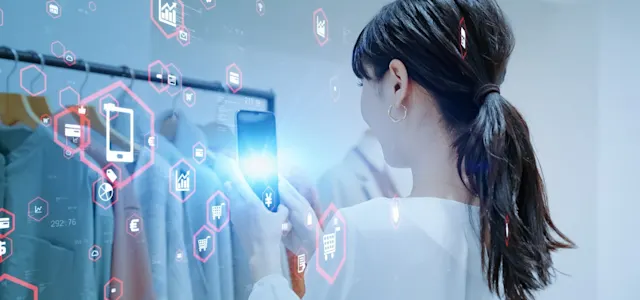Despite headlines talking about the closing of physical stores and of the future being online, physical stores still seem to have a place in consumers´ hearts. According to Nets Nordic Payment Report 2022, the main reasons for why consumers in Denmark, Sweden, Norway, and Finland want to visit physical stores, is that it allows them to:
Touch and feel the product before purchasing
Get a good overview of the product range available, and
Try/ test the product before buying it
For many customers in Sweden, physical stores thus still seem be regarded as an important aspect of the shopping experience, since they offer a place for discovery, evaluation, and experience of the products and the brand. What remains relevant to find out, though, is what characterizes the in-store customers of the future, and in turn what physical stores can do to better cater to their changing needs. This blog post aims to assist you in this, by presenting some emerging trends along with insights from Nets Nordic Payment Report 2022.
In-store customers value speed and convenience
Customer behavior in-store has changed in recent years. Previously, customers valued personal interactions with sales reps when shopping in grocery or department stores. These days, however, customers increasingly value speed and convenience and therefore prefer to use the self-service or self-checkout options.
New digital purchasing options in physical stores include scan & pay and self-service, which bring benefits to both customers and merchants through automated purchase processes. For customers, benefits include reduced waiting time and queuing, while merchants can benefit from more efficient purchasing processes.
Self-service is already used by a majority of consumers in all Nordic countries. The percentage of customers using self-service is the highest in Sweden (62 %), and the lowest in Finland (54 %). In both Denmark and Norway, however, the corresponding number is 57 %. Self-service options allow the customer to order and pay through visual terminals, in for example restaurants or cinemas. The primary benefits perceived by the customers include improved convenience and no/ less waiting time in the store.
The increased popularity of self-service has implications for the role that associates play in stores. Instead of managing the cashier and accepting payments, self-service solutions free up time for consulting and assisting customers which can allow for closer customer relationships. It also allows for changes in the store layout, allowing for more innovative solutions with multiple self-service check-out stations placed strategically around the store, instead of relying on the traditional staffed checkout station.
The number of channels and touchpoints is increasing:
The in-store customer of the future will most likely be someone hitting all the different channels and touchpoints of a brand – for example by visiting online channels prior to, or even while, visiting the physical store. Luckily for merchants, omnichannel customers are valuable as they purchase 1.7 times more than customers using only one single channel. Therefore, consistency between channels is an increasingly important focus for businesses to facilitate a unified omnichannel experience.
What is Omnichannel? An integrated experience across several online and offline channels
Omnichannel has been a hot topic for a long time. Key for success is to view omnichannel interactions and store interactions as interconnected. When browsing a web shop, customers expect to see availability, a connection to what is in the store and to be able to order things that can be picked up in store. On the flipside, when visiting a store, they also expect to be able to research a product online, and for example search for product reviews.
One way of offering a seamless customer experience that blurs the boundaries between physical and digital shopping, is to implement a Click & collect option. Click & collect is when a customer purchases something online and picks it up in-store, or returns a product bought online in a physical store. According to Nets Nordic Payment Report 2022, the percentage of customers who use Click & collect is the highest in Norway (69 %) and Denmark (55 %), while it is slightly lower in Sweden (39 %) and Finland (38 %). The Nordic customers’ primary benefits of using Click & collect are convenience and no/less queuing in-store.
Main take-aways:
Customers value the ability to touch and feel products in-store prior to purchasing. You can use this insight when you advertise your physical store. Read more about how to attract visitors to your physical store here.
The in-store customer of the future will increasingly be using digital solutions such as self-service, which gives rise to new possibilities in terms of store design and roles of store associates
Customers are increasingly using several channels to get in contact with brands, which is why it is important to offer omnichannel consistency.
How can Nets help you prepare for the future?
By downloading this year’s Nordic Payment Report by Nets, you can get a better view of how customer behaviours and preferences have evolved during the last couple of years. The report provides insights into a vast array of payment-related topics, including what payment methods customers prefer when shopping in for example cafes or supermarkets, to the type of loyalty solutions customers want (e.g., separate card or mobile app). By gaining deeper insights into customer preferences and behaviour relating to payments in physical commerce, you can better align your physical store experience with the expectations of in-store customers.
Finally, if you want to learn more about how to attract customers to your physical store – we have published a blog post with 5 tips about how to get customers from their couch to your store.
Was this article helpful?

